End of Chapter Solutions
Corporate Finance 8th edition
Ross, Westerfield, and Jaffe
Updated 11-21-2006
�
�
CHAPTER 1
INTRODUCTION TO CORPORATE
FINANCE
Answers to Concept Questions
1.
In the corporate form of ownership, the shareholders are the owners of the firm. The shareholders
elect the directors of the corporation, who in turn appoint the firm’s management. This separation of
ownership from control in the corporate form of organization is what causes agency problems to
exist. Management may act in its own or someone else’s best interests, rather than those of the
shareholders. If such events occur, they may contradict the goal of maximizing the share price of the
equity of the firm.
2. Such organizations frequently pursue social or political missions, so many different goals are
conceivable. One goal that is often cited is revenue minimization; i.e., provide whatever goods and
services are offered at the lowest possible cost to society. A better approach might be to observe that
even a not-for-profit business has equity. Thus, one answer is that the appropriate goal is to
maximize the value of the equity.
3. Presumably, the current stock value reflects the risk, timing, and magnitude of all future cash flows,
both short-term and long-term. If this is correct, then the statement is false.
4. An argument can be made either way. At the one extreme, we could argue that in a market economy,
all of these things are priced. There is thus an optimal level of, for example, ethical and/or illegal
behavior, and the framework of stock valuation explicitly includes these. At the other extreme, we
could argue that these are non-economic phenomena and are best handled through the political
process. A classic (and highly relevant) thought question that illustrates this debate goes something
like this: “A firm has estimated that the cost of improving the safety of one of its products is $30
million. However, the firm believes that improving the safety of the product will only save $20
million in product liability claims. What should the firm do?”
5. The goal will be the same, but the best course of action toward that goal may be different because of
differing social, political, and economic institutions.
6. The goal of management should be to maximize the share price for the current shareholders. If
management believes that it can improve the profitability of the firm so that the share price will
exceed $35, then they should fight the offer from the outside company. If management believes that
this bidder or other unidentified bidders will actually pay more than $35 per share to acquire the
company, then they should still fight the offer. However, if the current management cannot increase
the value of the firm beyond the bid price, and no other higher bids come in, then management is not
acting in the interests of the shareholders by fighting the offer. Since current managers often lose
their jobs when the corporation is acquired, poorly monitored managers have an incentive to fight
corporate takeovers in situations such as this.
�
B-2
SOLUTIONS
7. We would expect agency problems to be less severe in other countries, primarily due to the relatively
small percentage of individual ownership. Fewer individual owners should reduce the number of
diverse opinions concerning corporate goals. The high percentage of institutional ownership might
lead to a higher degree of agreement between owners and managers on decisions concerning risky
projects. In addition, institutions may be better able to implement effective monitoring mechanisms
on managers than can individual owners, based on the institutions’ deeper resources and experiences
with their own management.
8. The increase in institutional ownership of stock in the United States and the growing activism of
these large shareholder groups may lead to a reduction in agency problems for U.S. corporations and
a more efficient market for corporate control. However, this may not always be the case. If the
managers of the mutual fund or pension plan are not concerned with the interests of the investors, the
agency problem could potentially remain the same, or even increase since there is the possibility of
agency problems between the fund and its investors.
9. How much is too much? Who is worth more, Jack Welch or Tiger Woods? The simplest answer is
that there is a market for executives just as there is for all types of labor. Executive compensation is
the price that clears the market. The same is true for athletes and performers. Having said that, one
aspect of executive compensation deserves comment. A primary reason executive compensation has
grown so dramatically is that companies have increasingly moved to stock-based compensation.
Such movement is obviously consistent with the attempt to better align stockholder and management
interests. In recent years, stock prices have soared, so management has cleaned up. It is sometimes
argued that much of this reward is simply due to rising stock prices in general, not managerial
performance. Perhaps in the future, executive compensation will be designed to reward only
differential performance, i.e., stock price increases in excess of general market increases.
10. Maximizing the current share price is the same as maximizing the future share price at any future
period. The value of a share of stock depends on all of the future cash flows of company. Another
way to look at this is that, barring large cash payments to shareholders, the expected price of the
stock must be higher in the future than it is today. Who would buy a stock for $100 today when the
share price in one year is expected to be $80?
�
CHAPTER 2
ACCOUNTING STATEMENTS, TAXES,
AND CASH FLOW
Answers to Concepts Review and Critical Thinking Questions
1. True. Every asset can be converted to cash at some price. However, when we are referring to a liquid
asset, the added assumption that the asset can be converted cash at or near market value is important.
2. The recognition and matching principles in financial accounting call for revenues, and the costs
associated with producing those revenues, to be “booked” when the revenue process is essentially
complete, not necessarily when the cash is collected or bills are paid. Note that this way is not
necessarily correct; it’s the way accountants have chosen to do it.
3. The bottom line number shows the change in the cash balance on the balance sheet. As such, it is not
a useful number for analyzing a company.
4. The major difference is the treatment of interest expense. The accounting statement of cash flows
treats interest as an operating cash flow, while the financial cash flows treat interest as a financing
cash flow. The logic of the accounting statement of cash flows is that since interest appears on the
income statement, which shows the operations for the period, it is an operating cash flow. In reality,
interest is a financing expense, which results from the company’s choice of debt and equity. We will
have more to say about this in a later chapter. When comparing the two cash flow statements, the
financial statement of cash flows is a more appropriate measure of the company’s performance
because of its treatment of interest.
5. Market values can never be negative. Imagine a share of stock selling for –$20. This would mean
that if you placed an order for 100 shares, you would get the stock along with a check for $2,000.
How many shares do you want to buy? More generally, because of corporate and individual
bankruptcy laws, net worth for a person or a corporation cannot be negative, implying that liabilities
cannot exceed assets in market value.
6. For a successful company that is rapidly expanding, for example, capital outlays will be large,
possibly leading to negative cash flow from assets. In general, what matters is whether the money is
spent wisely, not whether cash flow from assets is positive or negative.
7.
It’s probably not a good sign for an established company to have negative cash flow from assets, but
it would be fairly ordinary for a start-up, so it depends.
�
B-4
SOLUTIONS
8. For example, if a company were to become more efficient in inventory management, the amount of
inventory needed would decline. The same might be true if the company becomes better at collecting
its receivables. In general, anything that leads to a decline in ending NWC relative to beginning
would have this effect. Negative net capital spending would mean more long-lived assets were
liquidated than purchased.
9.
If a company raises more money from selling stock than it pays in dividends in a particular period,
its cash flow to stockholders will be negative. If a company borrows more than it pays in interest and
principal, its cash flow to creditors will be negative.
10. The adjustments discussed were purely accounting changes; they had no cash flow or market value
consequences unless the new accounting information caused stockholders to revalue the derivatives.
Solutions to Questions and Problems
NOTE: All end-of-chapter problems were solved using a spreadsheet. Many problems require multiple
steps. Due to space and readability constraints, when these intermediate steps are included in this
solutions manual, rounding may appear to have occurred. However, the final answer for each problem is
found without rounding during any step in the problem.
Basic
1. To find owner’s equity, we must construct a balance sheet as follows:
CA
NFA
TA
$5,000
23,000
$28,000
Balance Sheet
CL
LTD
OE
TL & OE
$4,300
13,000
??
$28,000
We know that total liabilities and owner’s equity (TL & OE) must equal total assets of $28,000. We
also know that TL & OE is equal to current liabilities plus long-term debt plus owner’s equity, so
owner’s equity is:
OE = $28,000 –13,000 – 4,300 = $10,700
NWC = CA – CL = $5,000 – 4,300 = $700
2. The income statement for the company is:
Income Statement
Sales
Costs
Depreciation
EBIT
Interest
EBT
Taxes (35%)
Net income
$527,000
280,000
38,000
$209,000
15,000
$194,000
67,900
$126,100
�
CHAPTER 2 B- 5
One equation for net income is:
Net income = Dividends + Addition to retained earnings
Rearranging, we get:
Addition to retained earnings = Net income – Dividends
Addition to retained earnings = $126,100 – 48,000
Addition to retained earnings = $78,100
3. To find the book value of current assets, we use: NWC = CA – CL. Rearranging to solve for current
assets, we get:
CA = NWC + CL = $900K + 2.2M = $3.1M
The market value of current assets and fixed assets is given, so:
Book value CA = $3.1M
Book value NFA = $4.0M
Book value assets = $3.1M + 4.0M = $7.1M
Market value CA
= $2.8M
Market value NFA = $3.2M
Market value assets = $2.8M + 3.2M = $6.0M
4. Taxes = 0.15($50K) + 0.25($25K) + 0.34($25K) + 0.39($273K – 100K)
Taxes = $89,720
The average tax rate is the total tax paid divided by net income, so:
Average tax rate = $89,720 / $273,000
Average tax rate = 32.86%
The marginal tax rate is the tax rate on the next $1 of earnings, so the marginal tax rate = 39%.
5. To calculate OCF, we first need the income statement:
Income Statement
Sales
Costs
Depreciation
EBIT
Interest
Taxable income
Taxes (35%)
Net income
$13,500
5,400
1,200
$6,900
680
$6,220
2,177
$4,043
OCF = EBIT + Depreciation – Taxes
OCF = $6,900 + 1,200 – 2,177
OCF = $5,923
6. Net capital spending = NFAend – NFAbeg + Depreciation
Net capital spending = $4,700,000 – 4,200,000 + 925,000
Net capital spending = $1,425,000
�
B-6
SOLUTIONS
7. The long-term debt account will increase by $8 million, the amount of the new long-term debt issue.
Since the company sold 10 million new shares of stock with a $1 par value, the common stock
account will increase by $10 million. The capital surplus account will increase by $16 million, the
value of the new stock sold above its par value. Since the company had a net income of $7 million,
and paid $4 million in dividends, the addition to retained earnings was $3 million, which will
increase the accumulated retained earnings account. So, the new long-term debt and stockholders’
equity portion of the balance sheet will be:
Total long-term debt
Long-term debt
Shareholders equity
Preferred stock
Common stock ($1 par value)
Accumulated retained earnings
Capital surplus
Total Liabilities & Equity
Total equity
$ 68,000,000
$ 68,000,000
$ 18,000,000
35,000,000
92,000,000
65,000,000
$ 210,000,000
$ 278,000,000
8. Cash flow to creditors = Interest paid – Net new borrowing
Cash flow to creditors = $340,000 – (LTDend – LTDbeg)
Cash flow to creditors = $340,000 – ($3,100,000 – 2,800,000)
Cash flow to creditors = $340,000 – 300,000
Cash flow to creditors = $40,000
9. Cash flow to stockholders = Dividends paid – Net new equity
Cash flow to stockholders = $600,000 – [(Commonend + APISend) – (Commonbeg + APISbeg)]
Cash flow to stockholders = $600,000 – [($855,000 + 7,600,000) – ($820,000 + 6,800,000)]
Cash flow to stockholders = $600,000 – ($8,455,000 – 7,620,000)
Cash flow to stockholders = –$235,000
Note, APIS is the additional paid-in surplus.
10. Cash flow from assets = Cash flow to creditors + Cash flow to stockholders
= $40,000 – 235,000
= –$195,000
Cash flow from assets = –$195,000 = OCF – Change in NWC – Net capital spending
–$195,000
= OCF – (–$165,000) – 760,000
Operating cash flow
Operating cash flow
= –$195,000 + 165,000 + 760,000
= $730,000
�
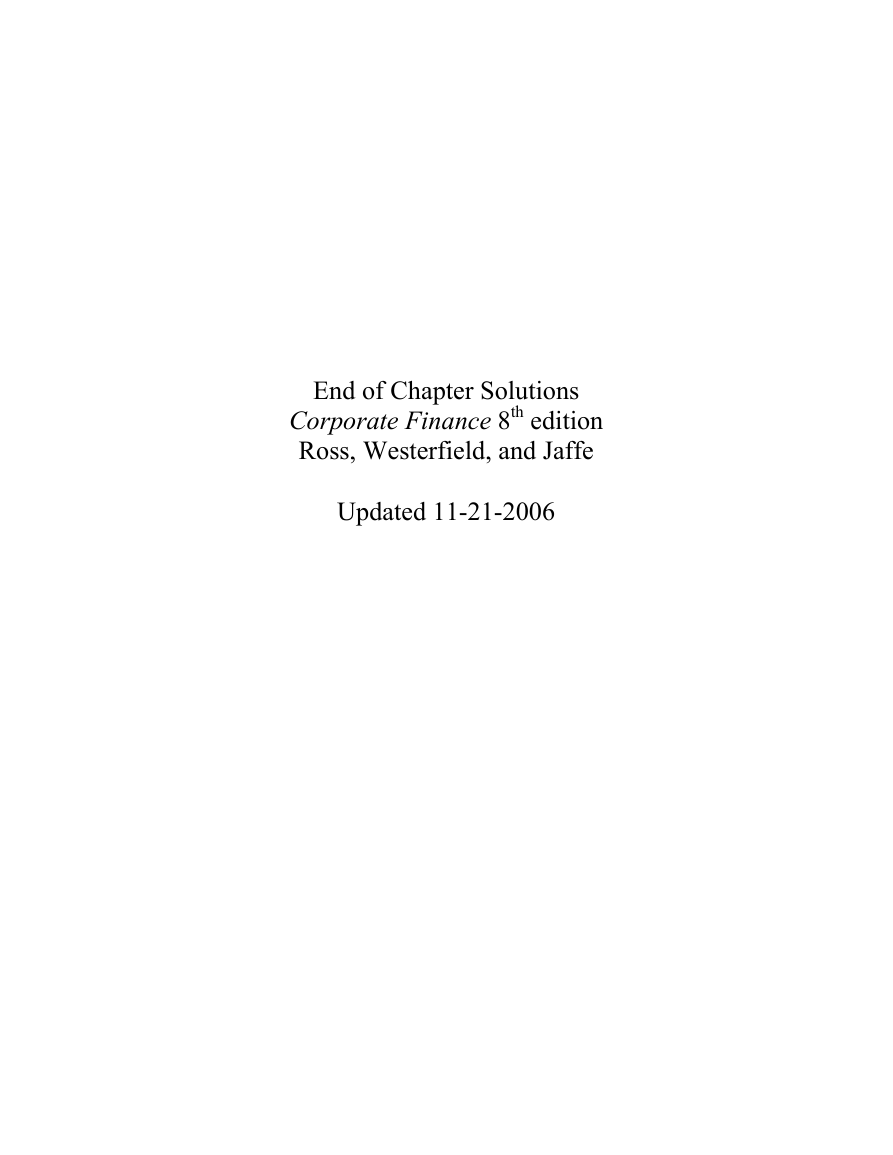

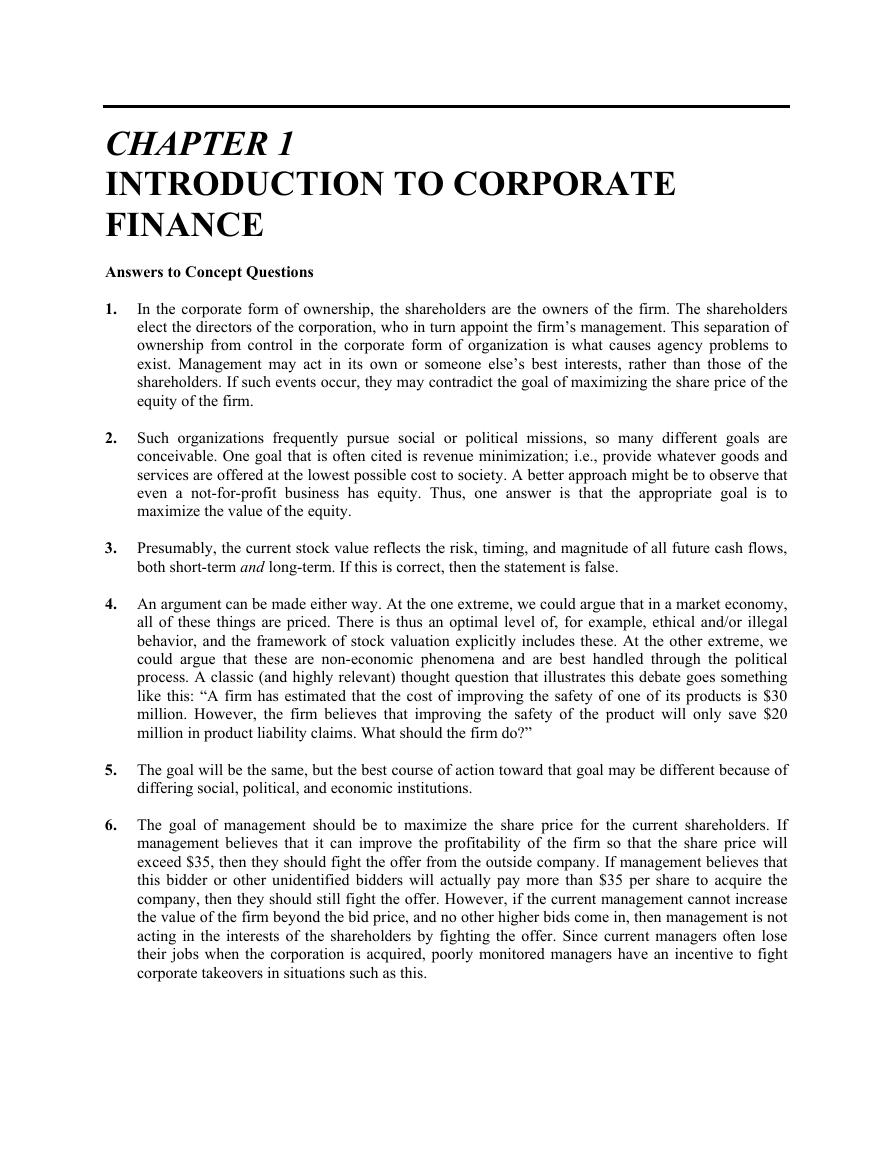
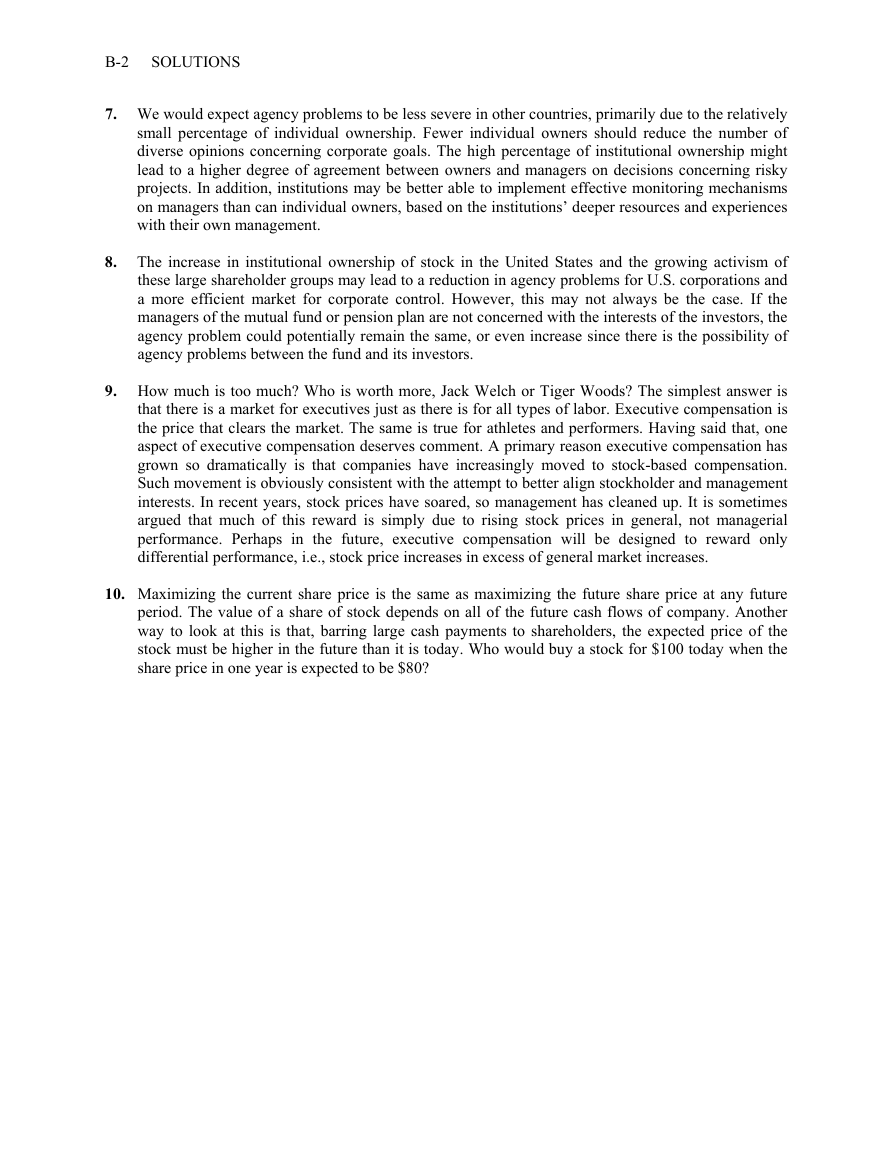
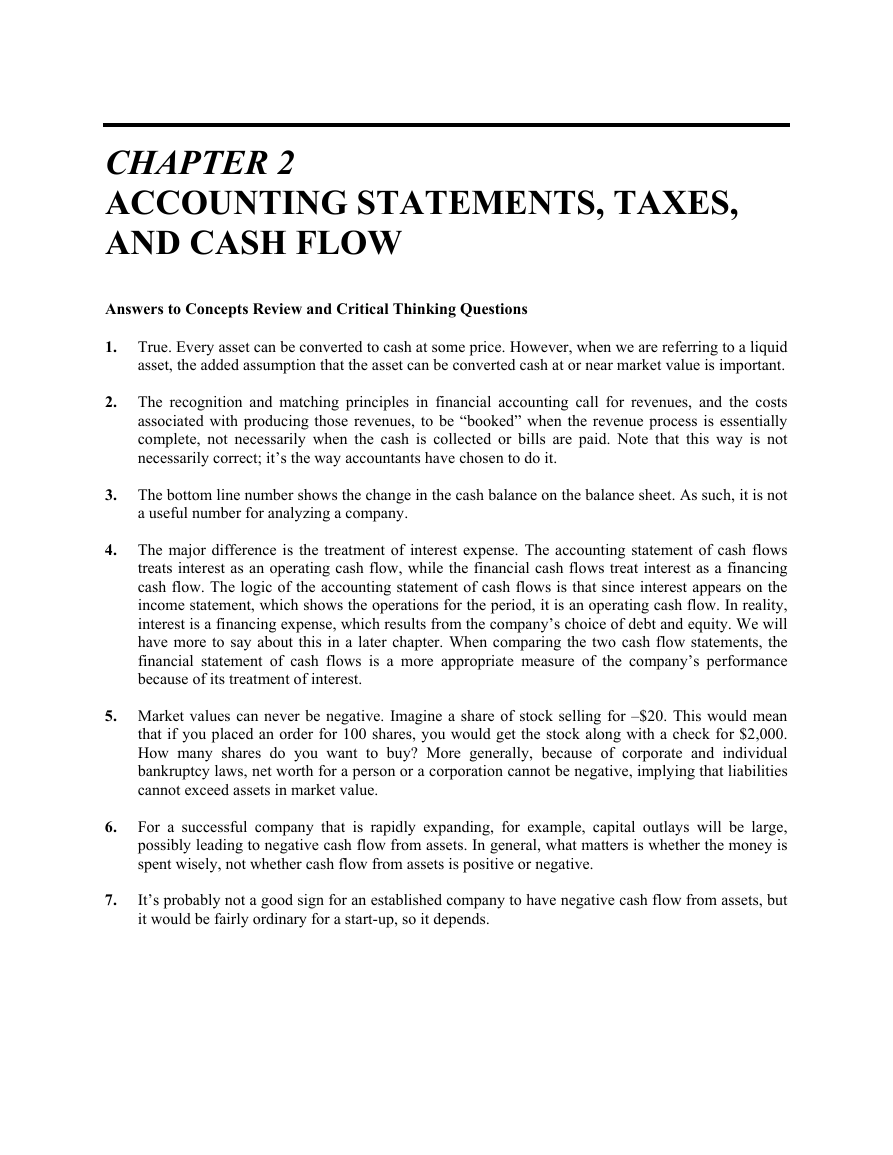
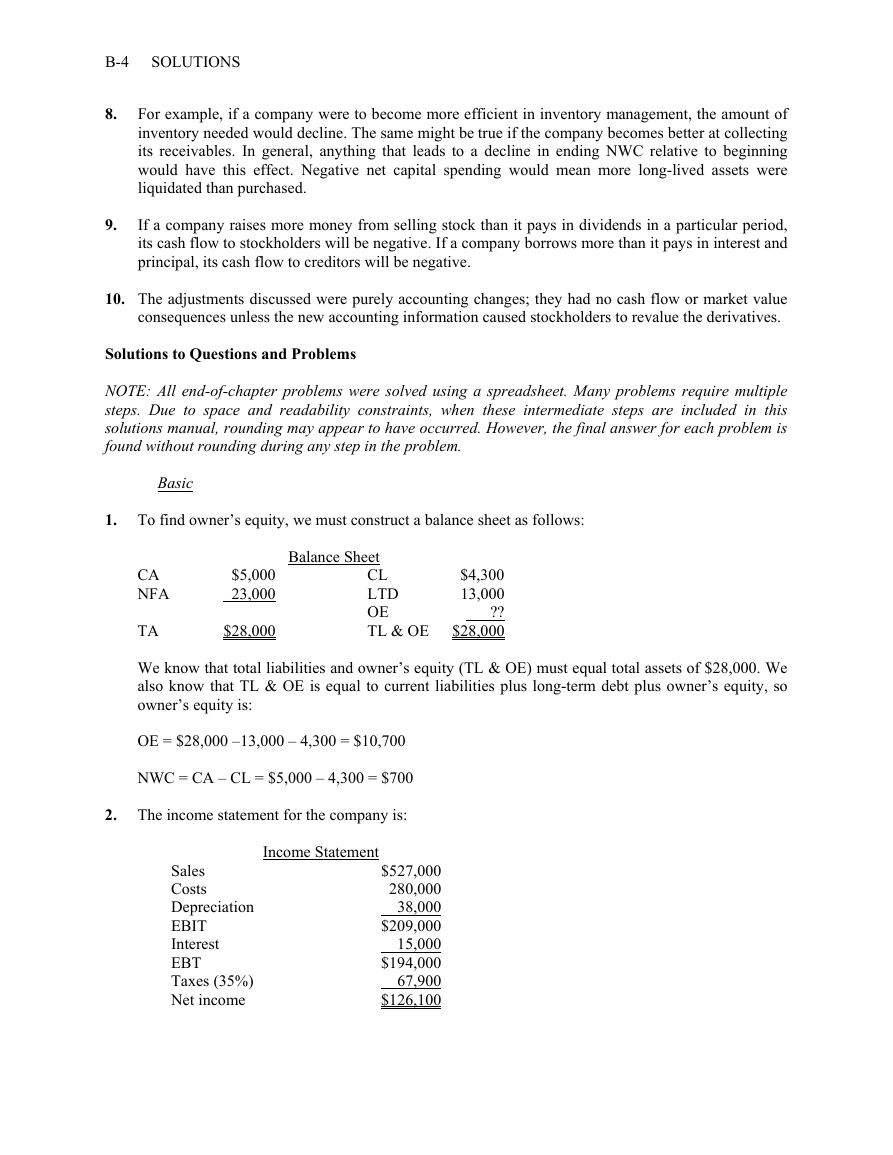
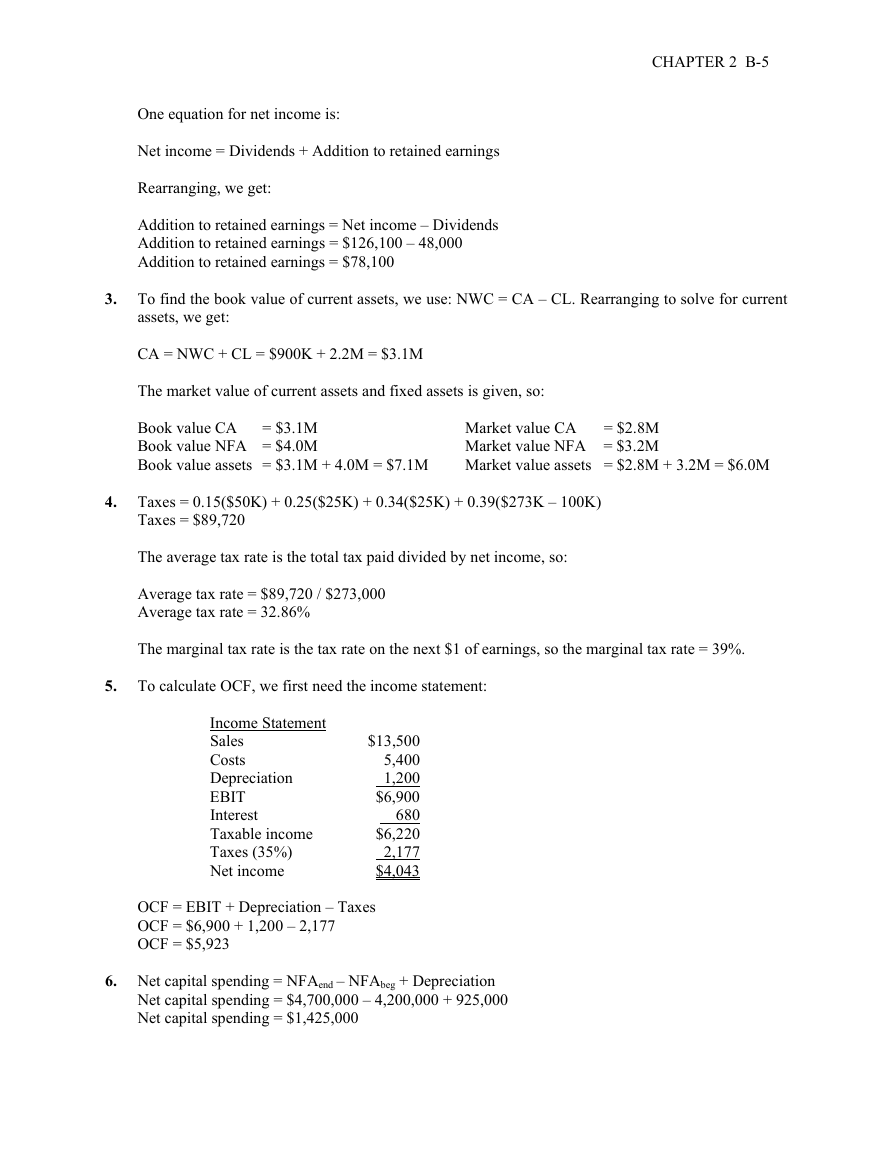
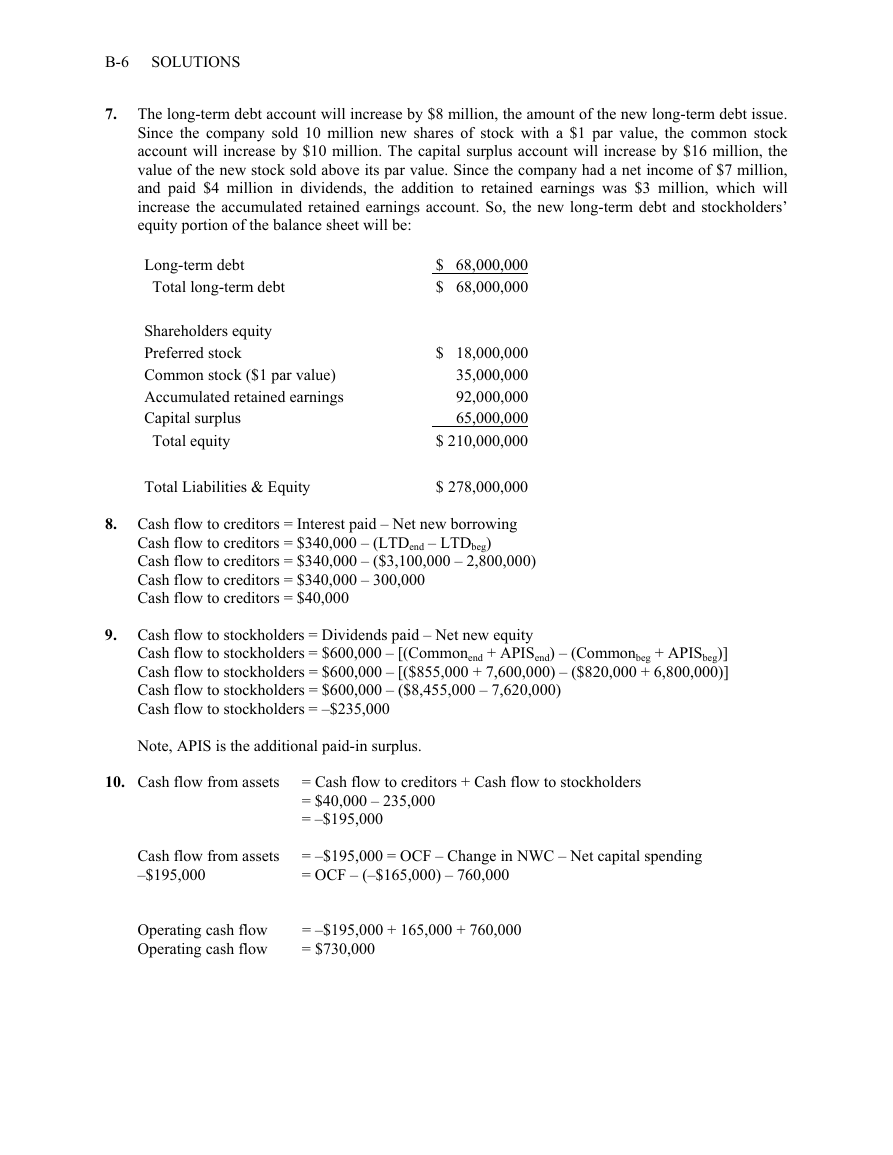








 2023年江西萍乡中考道德与法治真题及答案.doc
2023年江西萍乡中考道德与法治真题及答案.doc 2012年重庆南川中考生物真题及答案.doc
2012年重庆南川中考生物真题及答案.doc 2013年江西师范大学地理学综合及文艺理论基础考研真题.doc
2013年江西师范大学地理学综合及文艺理论基础考研真题.doc 2020年四川甘孜小升初语文真题及答案I卷.doc
2020年四川甘孜小升初语文真题及答案I卷.doc 2020年注册岩土工程师专业基础考试真题及答案.doc
2020年注册岩土工程师专业基础考试真题及答案.doc 2023-2024学年福建省厦门市九年级上学期数学月考试题及答案.doc
2023-2024学年福建省厦门市九年级上学期数学月考试题及答案.doc 2021-2022学年辽宁省沈阳市大东区九年级上学期语文期末试题及答案.doc
2021-2022学年辽宁省沈阳市大东区九年级上学期语文期末试题及答案.doc 2022-2023学年北京东城区初三第一学期物理期末试卷及答案.doc
2022-2023学年北京东城区初三第一学期物理期末试卷及答案.doc 2018上半年江西教师资格初中地理学科知识与教学能力真题及答案.doc
2018上半年江西教师资格初中地理学科知识与教学能力真题及答案.doc 2012年河北国家公务员申论考试真题及答案-省级.doc
2012年河北国家公务员申论考试真题及答案-省级.doc 2020-2021学年江苏省扬州市江都区邵樊片九年级上学期数学第一次质量检测试题及答案.doc
2020-2021学年江苏省扬州市江都区邵樊片九年级上学期数学第一次质量检测试题及答案.doc 2022下半年黑龙江教师资格证中学综合素质真题及答案.doc
2022下半年黑龙江教师资格证中学综合素质真题及答案.doc